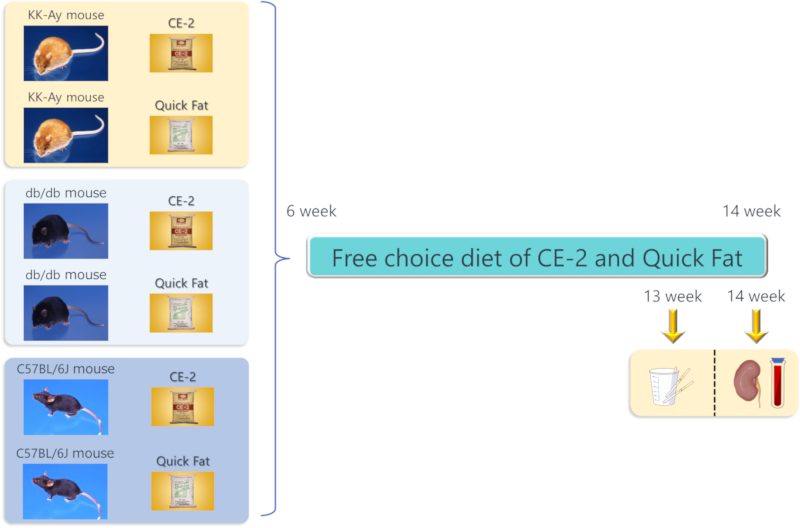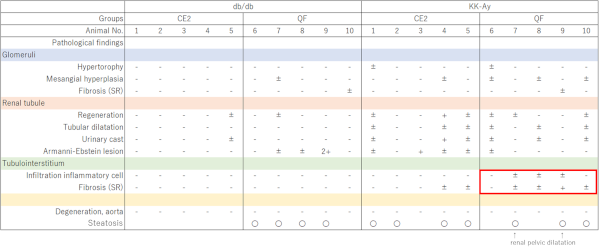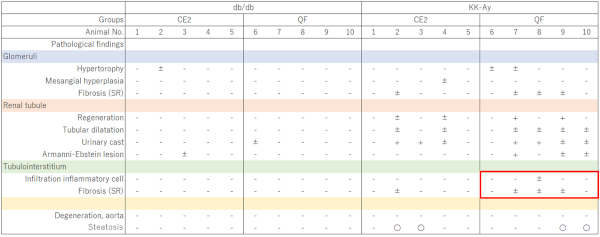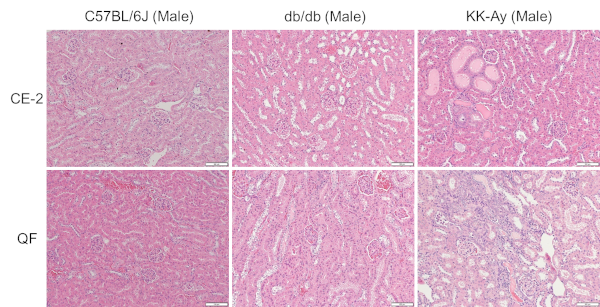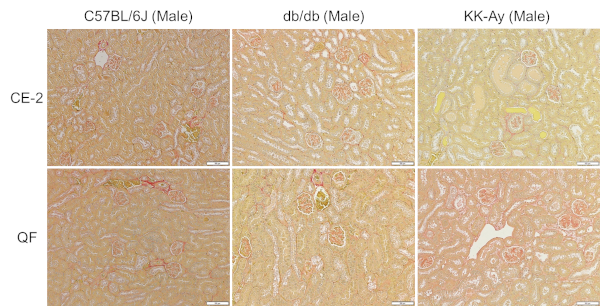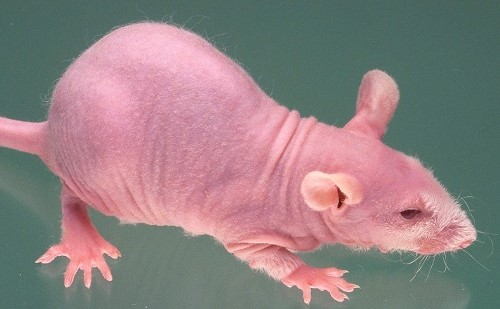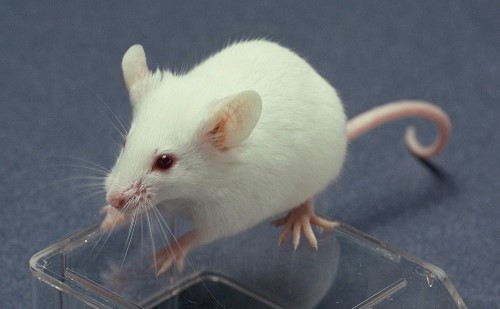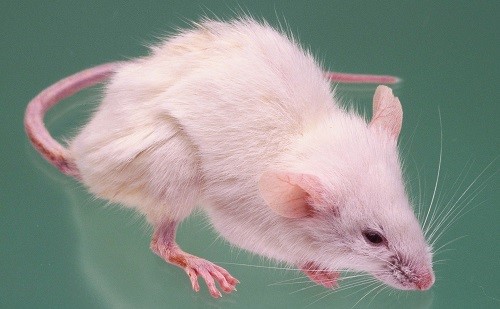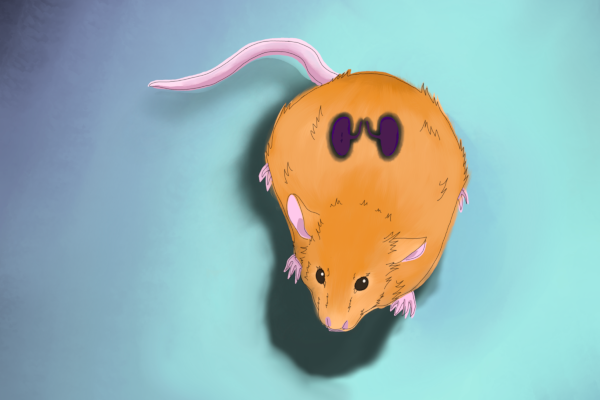
High sucrose/high fat diet (Quick Fat; QF) load obese type 2 diabetes model KK-Ay mice show signs of Diabetic Kidney Disease (DKD) development at 28 weeks of age, showing characteristics as a usseful DKD model.
It is extremely important to create a diabetes model that allows early analysis of severe renal lesions.
KK-Ay mice fed a high-scrose/high-fat diet (Quick Fat; QF) exhibited developed DKD pathology at 28 weeks of age. In the following, we will introduce the results of a study on the promotion of renal lesions in KK-Ay mice by QF loading.
If you wish to evaluate drugs in diabetic kidney disease using experimental animals, please consider using KK-Ay mice.
Method
Material and Method
- Animals:
Male and Female KK-Ay mice (n=5/group)
Male and Female db/db mice (n=5/group)、
Male and Female C57BL/6J mice (n=5/group) - Diets:
CE-2(crude fat: 4.60%, energy: 340.2kcal)
Quick Fat (QF) (crude fat: 14.35%, energy: 411.15kcal)
- All groups were bred from 6 weeks of age under the conditions of free choices diets, urine was collected at 13 weeks of age, and blood biochemistry and sacrificed at 14 weeks of age.
Measurement items
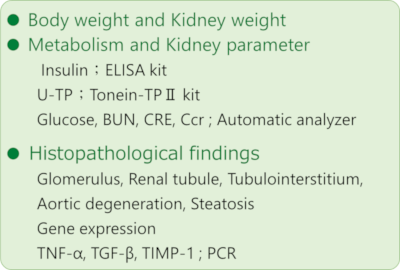
*Statistical analysis: EZR examined multiple comparisons using the Steel-Dwass method of the Kruskal-Wallis test.
Significant difference §p<0.05 vs. C57BL ,*p<0.05 vs. CE-2
Result
Body weight
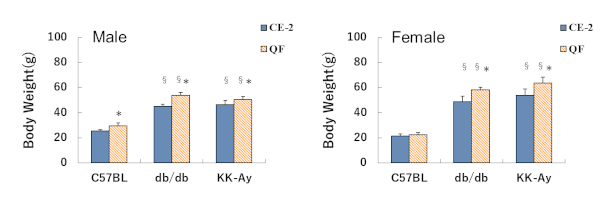
Blood biochemistry (1)
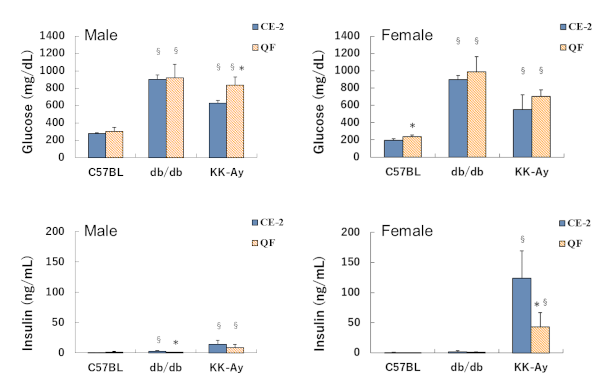
Blood biochemistry (2)
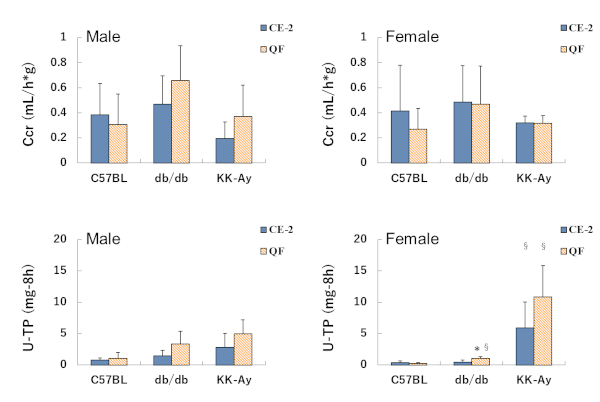
Kidney weight
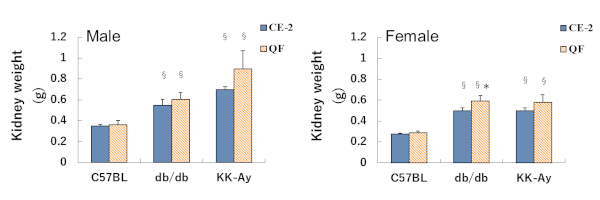
Glomerulus size
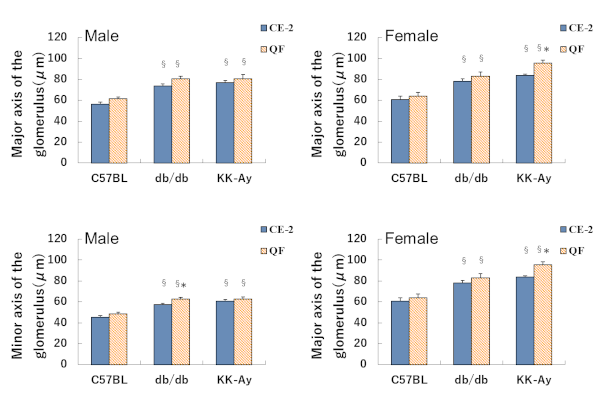
Kidney histopathological assessment in male db/db and KK-Ay mice
Kidney histopathological assessment in female db/db and KK-Ay mice
Kidney histopathological finding (HE staining)
Kidney histopathological finding (Sirius Red staining)
mRNA analyze
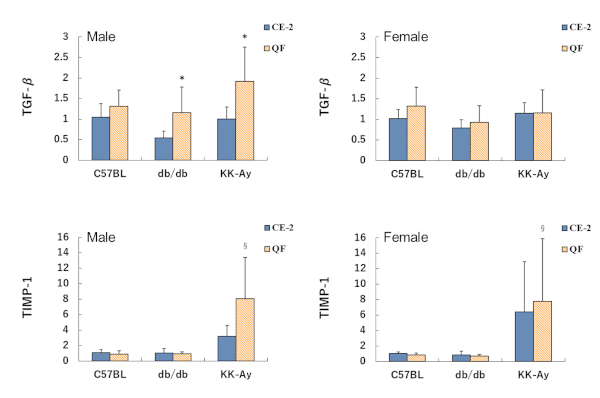
Tsutsui et al. (The 32nd Animal Meeting at the Japan Diabetic Nephropathy Study Group, 2021)
Result
- Hyperglycemia was observed in db/db and KK-Ay mice.
- Increased blood sugar level and hyperinsulinemia were observed in KK-Ay mice.
- QF feeding enhanced glomerular lesions in KK-Ay mice.
- In male KK-Ay mice, mesangial hyperplasia was observed with QF feeding.
- In female KK-Ay mice, QF feeding resulted in glomerular fibrosis.
- Tubulointerstitial lesions such as interstitial fibrosis was enhanced in QF-loaded KK-Ay mice.
- TIMP-1 was increased in QF-loaded KK-Ay mice.
Conclusion
The Q.F loaded KK-Ay mice are expected to be useful as a new DKD model.
Product page:
Inquiry
If you have any question, please feel free to contact us from below.


